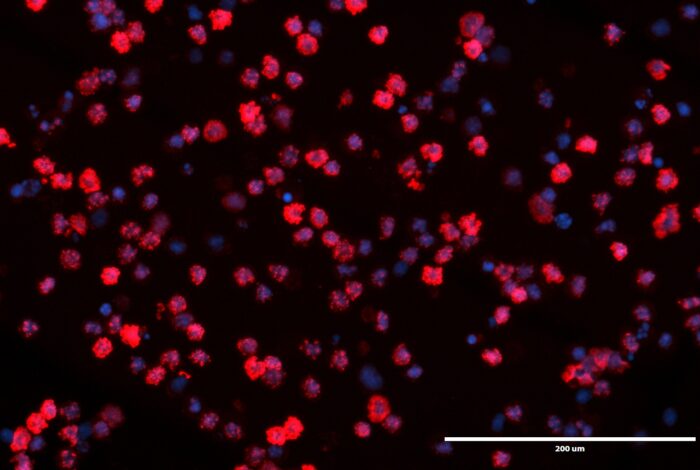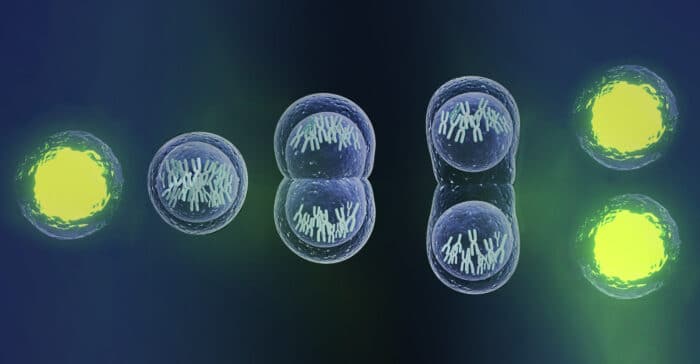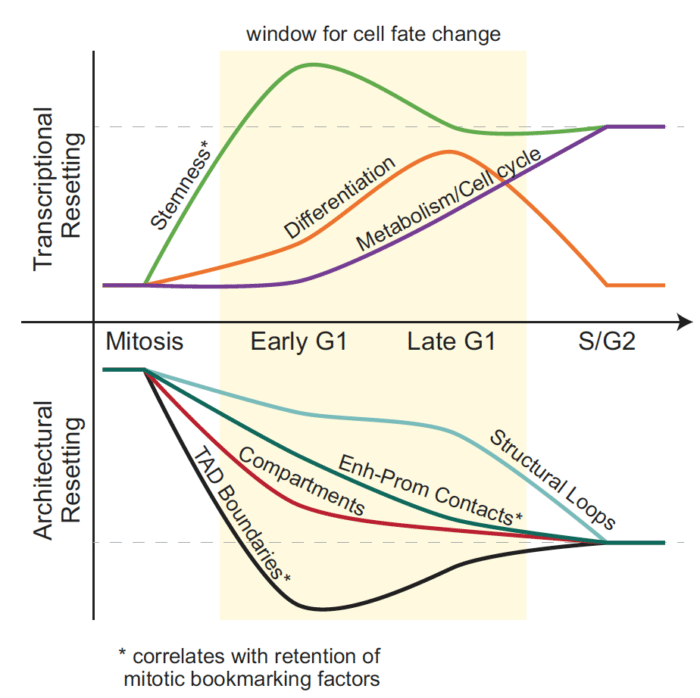Featured Publications
Select an article abstract above Abstract
Selected publications
-
3D Enhancer-promoter networks provide predictive features for gene expression and coregulation in early embryonic lineages
Murphy D, Salataj E, Di Giammartino DC, Rodriguez-Hernaez J, Kloetgen A, Garg V, Char E, Uyehara CM, Ee LS, Lee U, Stadtfeld M, Hadjantonakis AK, Tsirigos A, Polyzos A, Apostolou E. 3D Enhancer-promoter networks provide predictive features for gene expression and coregulation in early embryonic lineages.
-
Discovery of Competent Chromatin Regions in Human Embryonic Stem Cells
, , , , , , , , , , , , , , , , , ,
,
-
Systematic mapping and modeling of 3D enhancer-promoter interactions in early mouse embryonic lineages reveal regulatory principles that determine the levels and cell-type specificity of gene expression
, , , , , , , , , , , , , ,
-
Dynamic network-guided CRISPRi screen reveals CTCF loop-constrained nonlinear enhancer-gene regulatory activity in cell state transitions
, , , , , , , , , , , , , , , , , , ,
-
Single-cell analysis of bidirectional reprogramming between early embryonic states reveals mechanisms of differential lineage plasticities
, , , , , , , , , , ,
,
-
3D enhancer-promoter interactions and multi-connected hubs: Organizational principles and functional roles
Chris M. Uyehara and Effie Apostolou, Cell Reports, 2023 Volume 42, Issue 4, 112068, ISSN 2211-1247, doi.org/10.1016/j.celrep.2023.112068.
-
A bipartite element with allele-specific functions safeguards DNA methylation imprints at the Dlk1-Dio3 locus
Aronson BE, Scourzic L, Shah V, Swanzey E, Kloetgen A, Polyzos A, Sinha A, Azziz A, Caspi I, Li J, Pelham-Webb B, Glenn RA, Vierbuchen T, Wichterle H, Tsirigos A, Dawlaty MM, Stadtfeld M* and Apostolou E*.
Developmental Cell 2021 Nov 22;56(22):3052-3065.e5. doi: 10.1016/j.devcel.2021.10.004.
-
OCT2 pre-positioning facilitates cell fate transition and chromatin architecture changes in humoral immunity
Doane AS, Chu CS, Di Giammartino DC, Rivas MA, Hellmuth JC, Jiang Y, Yusufova N, Alonso A, Roeder RG, Apostolou E, Melnick AM, Elemento O.
Nature Immunology 2021 Oct;22(10):1327-1340. doi: 10.1038/s41590-021-01025-w. PMID: 34556886
-
Deciphering the Complexity of 3D Chromatin Organization Driving Lymphopoiesis and Lymphoid Malignancies
Laurianne Scourzic, Eralda Salataj and Effie Apostolou
Frontiers in Immunology 2021 May 14;12:669881 PMID: 34054841
-
H3K27ac bookmarking promotes rapid post-mitotic activation of the pluripotent stem cell program without impacting 3D chromatin reorganization
Molecular Cell. 2021 Apr 15;81(8):1732-1748.e8. PMID: 33730542 -
Histone H1 loss drives lymphoma by disrupting 3D chromatin architecture
Nevin Yusufova, Andreas Kloetgen, Matt Teater, Adewola Osunsade, Jeannie M Camarillo, Christopher R Chin, Ashley S Doane, Bryan J Venters, Stephanie Portillo-Ledesma, Joseph Conway, Jude M Phillip, Olivier Elemento, David W Scott, Wendy Béguelin, Jonathan D Licht, Neil L Kelleher, Louis M Staudt, Arthur I Skoultchi, Michael-Christopher Keogh, Effie Apostolou, Christopher E Mason, Marcin Imielinski, Tamar Schlick, Yael David, Aristotelis Tsirigos, C David Allis, Alexey A Soshnev, Ethel Cesarman, Ari M Melnick
Nature 2021 Jan;589(7841):299-305. PMID: 33299181
-
Identification of Cancer Drivers at CTCF Insulators in 1,962 Whole Genomes.
Cell Systems. 2019 May 22;8(5):446-455.e8. PMID: 31078526 -
Transcription factors: building hubs in the 3D space.
Cell Cycle. 2020 Oct;19(19):2395-2410. PMID: 32783593 -
KLF4 is involved in the organization and regulation of pluripotency-associated three-dimensional enhancer networks.
Nature Cell Biology. 2019 Oct;21(10):1179-1190. PMID: 31548608 -
A Susceptibility Locus on Chromosome 13 Profoundly Impacts the Stability of Genomic Imprinting in Mouse Pluripotent Stem Cells.
Cell Reports. 2020 Mar 17;30(11):3597-3604.e3. doi: 10.1016/j.celrep.2020.02.073.PMID: 32187532 -
Dynamic 3D Chromatin Reorganization during Establishment and Maintenance of Pluripotency.
Pelham-Webb B, Murphy D and Apostolou E.
Stem Cell Reports. 2020 Dec 8;15(6):1176-1195. PMID: 33242398
-
Context-Dependent Requirement of Euchromatic Histone Methyltransferase Activity during Reprogramming to Pluripotency.
Vidal SE, Polyzos A, Chatterjee K, Ee LS, Swanzey E, Morales-Valencia J, Wang H, Parikh CN, Amlani B, Tu S, Gong Y, Snetkova V, Skok JA, Tsirigos A, Kim, Apostolou E and Stadtfeld M.
Stem Cell Reports. 2020 Dec 8;15(6):1233-1245. PMID: 32976761
-
Wide-spread Mitotic Bookmarking by Histone Marks and Transcription Factors in Pluripotent Stem Cells.
Cell Reports. 2017 May 16;19(7):1283-1293. PMID: 28514649
-
Genome-wide chromatin interactions of the Nanog locus in pluripotency, differentiation, and reprogramming.
Cell Stem Cell. 2013 Jun 6;12(6):699-712. PMID: 23665121 -
Aberrant silencing of imprinted genes on chromosome 12qF1 in mouse induced pluripotent stem cells.
Nature. 2010 May 13;465(7295):175-81. PMID: 20418860 -
Virus Infection Induces NF-kappaB-dependent interchromosomal associations mediating monoallelic IFN-beta gene expression.
Cell. 2008 Jul 11;134(1):85-96. PMID: 18614013
Press
-

Article featuring our work on 3D regulatory networks in early embryonic decisions
n the nucleus of cells, long strands of DNA are tightly wrapped around a scaffolding of proteins in a complex called chromatin, like a rolled-up ball of yarn. A new study by Weill Cornell Medicine investigators reveals that beyond providing a convenient way to store DNA in a tight space, the 3-dimensional (3D) organization of noncoding gene regulators in chromatin contributes to the control of key cell identity programs in early embryonic development. The results have implications for understanding this critical period and how changes in the 3D chromatin architecture may contribute to developmental abnormalities or diseases like diabetes or cancer.
-

Article featuring our research on the molecular resetting of stem cell identity after cell division
Molecular "bookmarks," which allow cells to retain their characteristics during cell division, ensure fast reactivation of critical cell identity genes after cell division, according to investigators at Weill Cornell Medicine. The new work helps illuminate a process that has puzzled biologists for decades and suggests new strategies for modulating cell fate both for stem cell therapy and cancer treatment.
-

Article from Cornell Research featuring our recent work and publications.
Embryonic development starts from a single cell known as a zygote. Through multiple rounds of proliferation and differentiation, this initial cell generates the vast array of specialized cells that make up the body. But each time a cell proliferates and goes through mitosis—the process of cell division that results in two genetically identical daughter cells—it faces an identity crisis. It must decide whether to keep its original identity through self-renewal or give rise to a new one through differentiation.
-

Multi-million NIH funding supports inter-campus collaboration between the Apostolou group and colleagues from Ithaca Cornell Campus
A Multi-PI team (Lis, Yu, Apostolou and Josefowicz) will use a bevy of state-of-the-art technologies to investigate large macromolecular complexes involved in transcription and its regulation. They developed an RNA aptamer – RNA selected to tightly bind to a green fluorescent protein – for tagging large complexes. The group will focus initially on RNA Polymerase II, the main machine that transcribes mRNA encoding genes.




